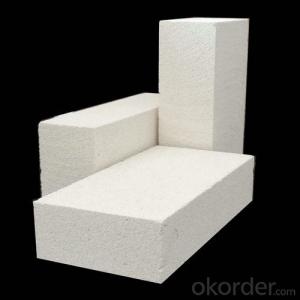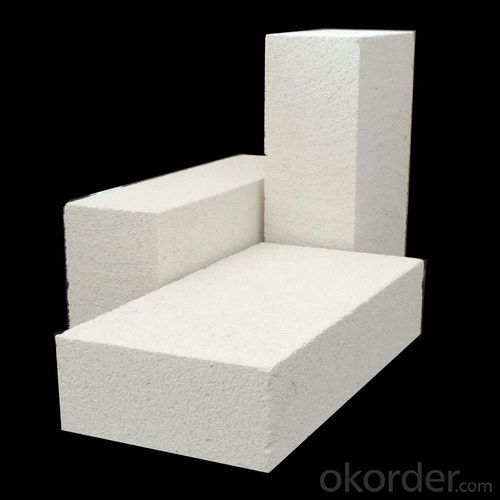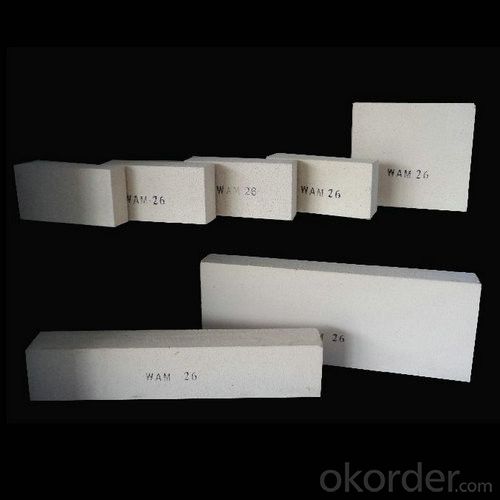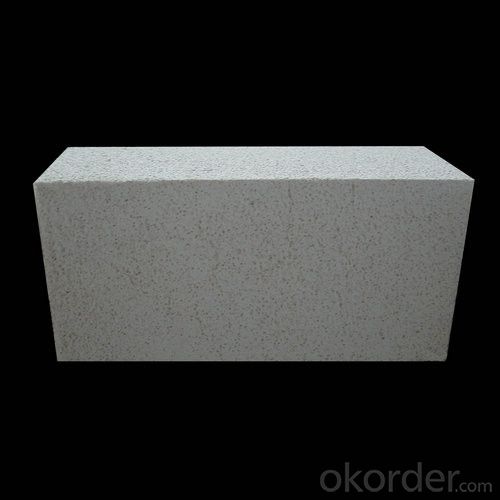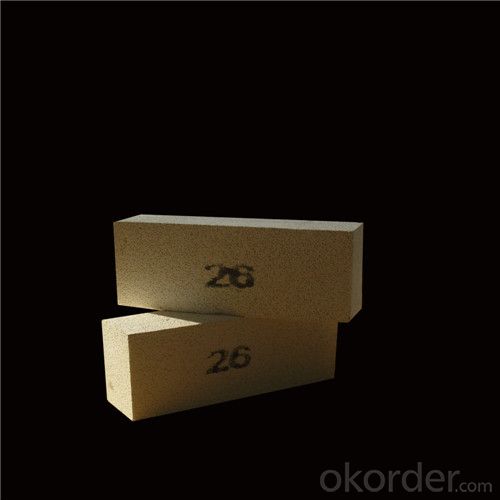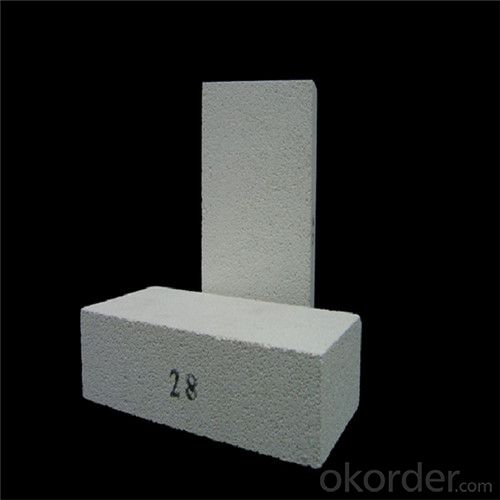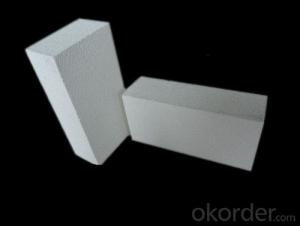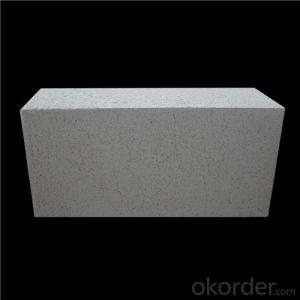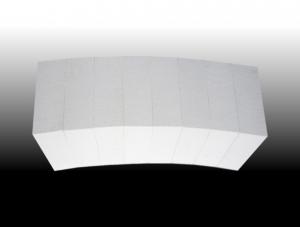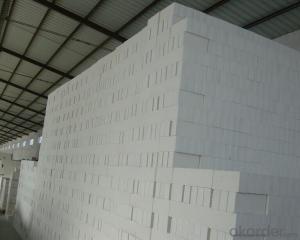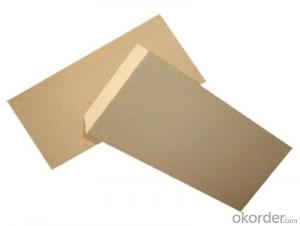Insulating Fire Brick - GJM26 High Temperature Furnace
- Loading Port:
- Shanghai
- Payment Terms:
- TT or LC
- Min Order Qty:
- 1 m.t.
- Supply Capability:
- 1000 m.t./month
OKorder Service Pledge
OKorder Financial Service
You Might Also Like
What it the Insulating Fire Brick?
Insulating fire bricks (IFBs) are called soft bricks comparing to hard bricks or Fireclay bricks and they are light in weight. Insulating fire brick can be easily cut by handheld hack saw or other hand tools like chisel. Insulating firebricks have high porous rate and have excellent insulating properties.
What are the applications of Insulating Fire Brick?
Glass Industries
Ceramics Industries
Electrolytic Aluminum Industries
Iron & Steel Industries
Non-Ferrous Metals Industries
Power Generation Industries
Primary hot surface linings
Sulphur recovery equipment
Cracking Furnace; Conversion Furnace
Heating equipment or Heating Furnace, Even-heating Furnace, Heat-processing Furnace
What are the excellent features of Insulating Fire Brick?
High heat resistance and durability
Excellent insulating properties
Excellent resistance to thermal shock
Low thermal conductivity
Low heat storage
Excellent construction/compressive strength
Particularly suited to highest temperature applications above 1600°C or 2800°F
Structural integrity capable of dealing with erosive and abrasive environments
Low impurity
Precise dimensions
Image of Insulating Fire Brick
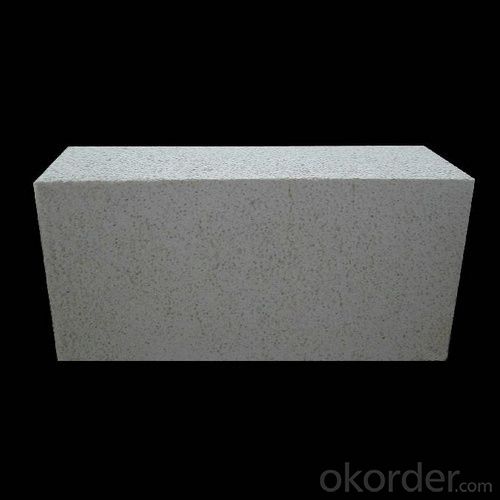
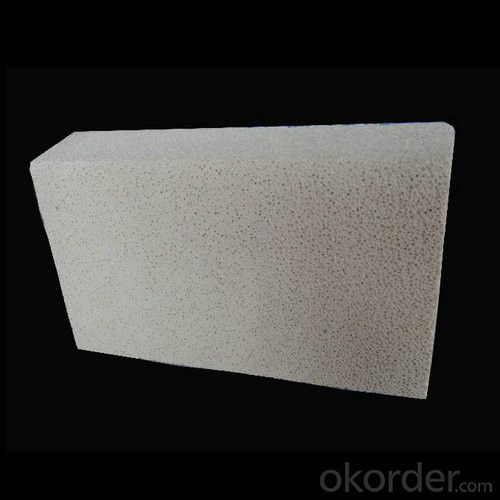
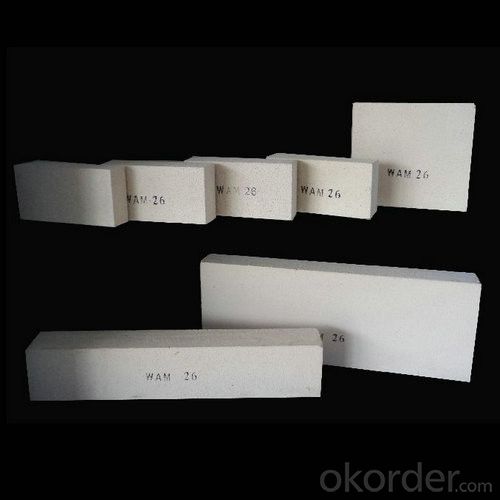
Technical Data of Insulating Fire Brick
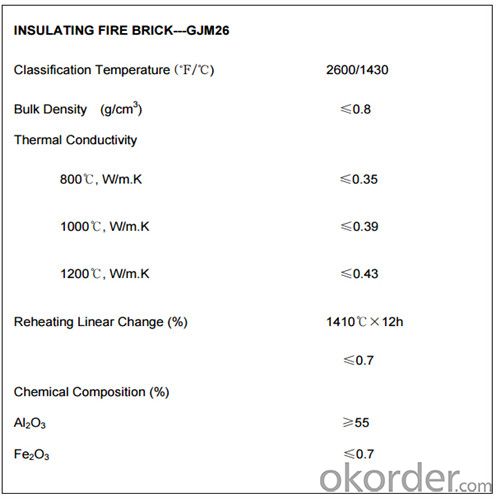
Why Choose Us
l We are a government owned company with ISO certificate.
l We are listed in Global Fortune 500 with D & B report.
l We have more than 11 refractory production facilities and bases across China. We have a wide products range, such as ceramic fiber products (ceramic fiber blanket, module, board, paper, bulk), ceramic fiber textile (ceramic fiber rope, cloth, tape, yarn) etc, refractory brick (fireclay brick, high alumina brick, silica brick, magnesia brick etc), monolithic refractory materials, insulating fire brick, calcium silicate board, mica sheet, steel fiber. You can find various products here, and we can combine the light weight ceramic fiber products with the heavy weight refractory brick in one container delivery, then save the sea freight for you.
l We have strict materials selecting system and quality control system. We have the ability to take responsibility for your orders and product quality.
FAQ
Q1: How do you control the products quality?
A1: With strict quality control system throughout the materials selection and production process, our refractory and ceramic fiber products quality is effectively controlled to meet customer requirements. From the raw materials selecting, our quality control begin. The quality certificates of raw materials are required and each batch will be tested before using. During production, the quality control is conducted by workers and then each piece will be sorted and examined by quality supervisor.
Q2: What`s the lead time for my order?
A2: It depends on customers’ requirements and our production schedule. And usually we need 30-60 days for refractory bricks, 10-25 days for unshaped refractory materials and 10-20 days for ceramic fiber blankets.
Q3: Can you offer Door-to-Door delivery?
A3: Yes, but only for some countries such as U.S., UAE, Saudi Arabia, Iran, and Russia, etc.
Q4: What is the minimum quantity?
A4: There is no minimum order quantity. Depending on the item and processing, there may be a minimum production required, however we can offer a quotation based only on the quantity you need.
Q5: Can you give me a brief introduction of the application of your products?
A5: CNBM (China National Building Material) core refractory business comprises the production, sale and installation of high-grade refractory products, the development and implementation of customized system solutions as well as rendering outstanding services for the key industries in Glass, Iron& Steel, Petrochemical, Cement, Ceramic and Nonferrous Metals.
- Q: What is the difference between insulating fire bricks and regular fire bricks?
- Insulating fire bricks and regular fire bricks have different thermal properties and applications. Insulating fire bricks are specifically designed for their excellent insulation capabilities, making them perfect for situations where heat retention is crucial. These bricks have low thermal conductivity, which allows them to minimize heat transfer and maintain the desired temperature in enclosed spaces. As a result, they are commonly used in industries such as iron and steel, ceramics, glass, and petrochemicals, where efficient containment of high temperatures is necessary. On the other hand, regular fire bricks, also known as refractory bricks, focus more on enduring extreme heat and maintaining structural integrity in high-temperature environments. They are typically made from dense materials like clay or silica, which provide excellent resistance to heat, chemicals, and mechanical stress. Regular fire bricks are widely utilized in fireplaces, wood-burning stoves, kilns, and other heating appliances, as their dense composition ensures durability and resistance to thermal shock. To summarize, insulating fire bricks prioritize heat insulation, while regular fire bricks prioritize heat resistance and structural stability. The choice between the two depends on the specific requirements of the application. Insulating fire bricks are ideal for industries that require heat retention, while regular fire bricks are suitable for high-temperature environments where durability and resilience are crucial.
- Q: Can insulating fire bricks be used in the construction of brick kilns?
- Insulating fire bricks are capable of being utilized in the construction of brick kilns. Designed specifically with high thermal resistance, these bricks are well-suited for scenarios requiring insulation. Within brick kilns, insulating fire bricks may be employed to line the walls, floor, and roof of the kiln, effectively maintaining heat and enhancing energy efficiency. These bricks possess the ability to withstand elevated temperatures, providing insulation against the heat generated throughout the firing process. Furthermore, they aid in reducing heat loss, resulting in quicker and more efficient firing cycles. In conclusion, incorporating insulating fire bricks into the construction of brick kilns can elevate their performance and contribute to a more effective and sustainable operation.
- Q: Can insulating fire bricks be used in smelting furnaces?
- Yes, insulating fire bricks can be used in smelting furnaces. Insulating fire bricks are specifically designed to withstand high temperatures and provide excellent thermal insulation. They help in reducing heat loss and improving energy efficiency in the smelting process.
- Q: Can insulating fire bricks be used in the construction of crucibles?
- Yes, insulating fire bricks can be used in the construction of crucibles. Insulating fire bricks are made from lightweight materials such as clay and silica, which have excellent thermal insulation properties. This makes them ideal for applications where high temperatures need to be maintained and heat loss needs to be minimized, such as in the construction of crucibles. Crucibles are used in various industries, including metallurgy and chemistry, to hold and melt materials at extremely high temperatures. The use of insulating fire bricks in crucible construction helps to reduce heat loss, improve energy efficiency, and maintain a more consistent temperature within the crucible, resulting in better overall performance. Additionally, the lightweight nature of insulating fire bricks makes them easier to handle and install, further enhancing their suitability for crucible construction.
- Q: Are insulating fire bricks resistant to fire damage?
- Insulating fire bricks have been specially crafted to endure fire damage. Their composition consists of unique refractory materials, enabling them to withstand exceedingly high temperatures without warping or compromising their insulation capabilities. Possessing a high melting point and low thermal conductivity, these bricks effectively insulate against heat transfer and safeguard against fire harm. Their utilization is widespread in scenarios demanding exposure to fire and elevated temperatures, including furnaces, kilns, fireplaces, and industrial procedures. In summary, insulating fire bricks exhibit reliability and durability, delivering exemplary defense against fire damage.
- Q: Can insulating fire bricks be used as a backup insulation material?
- Yes, insulating fire bricks can be used as a backup insulation material. Insulating fire bricks are designed to have a high thermal resistance and low thermal conductivity, making them suitable for providing insulation in high-temperature applications. They can be used as backup insulation behind other refractory materials to enhance insulation properties and improve the overall thermal efficiency of a system.
- Q: Are insulating fire bricks resistant to alkali vapor attack?
- Yes, insulating fire bricks are generally resistant to alkali vapor attack. These bricks are made using high-quality refractory materials, such as fire clay or silica, which have excellent resistance to chemical attacks, including alkali vapor. They are designed to withstand high temperatures and harsh environments, making them suitable for applications where alkali vapor may be present, such as in industrial furnaces, kilns, and incinerators. However, the exact resistance may vary depending on the specific composition and manufacturing process of the insulating fire bricks. It is always recommended to consult the manufacturer's specifications or seek expert advice to ensure their compatibility with alkali vapor exposure.
- Q: Do insulating fire bricks require any curing or drying time before use?
- Insulating fire bricks must undergo a curing or drying period prior to use. This is necessary because the bricks are manufactured using binders and additives that need to be cured or dried in order to ensure optimal performance and durability. Through the curing or drying process, these materials harden and solidify, thereby enhancing the insulation capabilities of the bricks. Neglecting to properly cure or dry the bricks before use can lead to decreased insulation efficiency and potential damage to the bricks when exposed to heat. To ensure the best results, it is advised to adhere to the manufacturer's instructions regarding the specific curing or drying time required for the insulating fire bricks.
- Q: Are insulating fire bricks resistant to carbon monoxide?
- Yes, insulating fire bricks are resistant to carbon monoxide. These bricks are specifically designed to withstand high temperatures and are commonly used in applications where exposure to intense heat and chemicals, such as carbon monoxide, is expected. The insulating properties of these bricks make them highly resistant to heat transfer, allowing them to maintain their structural integrity in the presence of carbon monoxide and other combustion gases. This resistance to carbon monoxide makes insulating fire bricks an ideal choice for applications such as furnaces, kilns, and other high-temperature environments where the risk of carbon monoxide exposure is present.
- Q: Can insulating fire bricks be used in outdoor applications?
- No, insulating fire bricks are not suitable for outdoor applications as they are not designed to withstand the harsh environmental conditions typically found in outdoor settings.
Send your message to us
Insulating Fire Brick - GJM26 High Temperature Furnace
- Loading Port:
- Shanghai
- Payment Terms:
- TT or LC
- Min Order Qty:
- 1 m.t.
- Supply Capability:
- 1000 m.t./month
OKorder Service Pledge
OKorder Financial Service
Similar products
Hot products
Hot Searches
Related keywords
